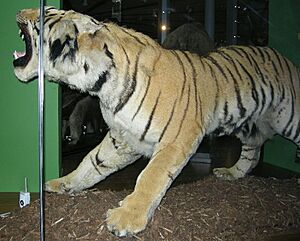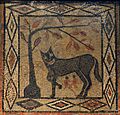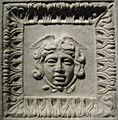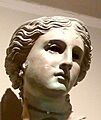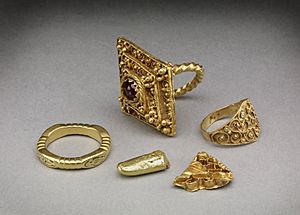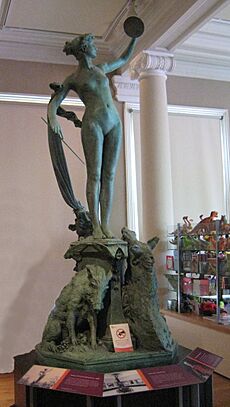Leeds City Museum facts for kids

Leeds City Museum
|
|
| Established | 1819; reopened 13 September 2008 |
|---|---|
| Location | Millennium Square, Leeds, West Yorkshire, England |
| Type | Collection (museum), Heritage centre |
| Public transit access | Leeds railway station, Leeds City bus station |
The Leeds City Museum is a fantastic place to explore history and nature in Leeds, West Yorkshire, England. It first opened its doors in 1819. Since 2008, the museum has been located in a beautiful old building called the Mechanics' Institute. This building was designed by Cuthbert Brodrick and is now part of Millennium Square. It's one of eight amazing museums and galleries run by Leeds Museums & Galleries.
The museum often has special exhibitions, along with its regular displays that show off items from the Leeds Archive.
Contents
Discovering the Museum's History
The museum first started in 1819. It was set up by the Leeds Philosophical and Literary Society in a building called Philosophical Hall. In 1821, it opened its doors to everyone. Later, in 1921, the museum became part of the Leeds City Council.
The original Philosophical Hall was rebuilt in 1862. You can still see its stone entrance on Park Row today. Sadly, in 1941, the museum building and many of its treasures were badly damaged during bombing raids.
The museum closed in 1965. Some exhibits, like the famous Leeds Tiger and a giant moose skeleton, were moved to a few rooms in the city library. By 1999, the museum's collections were put into storage. However, researchers and the public could still see items by making an appointment. A special resource centre opened in Yeadon in 2000 for viewing items.
In 2001, Leeds City Council asked for money from the National Lottery. They were awarded £19.5 million in 2004. This money helped transform the old Mechanics' Institute building into the new Leeds City Museum. The building was designed by Cuthbert Brodrick and built between 1865 and 1868. It was redesigned by Austin-Smith:Lord architects and Buro Happold engineers. The museum finally reopened its doors in 2008, ready for new visitors.
Exploring the Museum's Exhibits
The museum's exhibits often change, but they mostly focus on the history of Leeds. In the main hall, you'll find a huge map of Leeds printed on the floor. There's also a small model of the old Quarry Hill flats.
Life on Earth Gallery
This gallery is all about natural history. You can see everything from a meteorite to dinosaur poop, also known as coprolite. In 2019, a huge skeleton of a Long-finned Pilot Whale was hung from the ceiling just outside this gallery.
You'll also find several old taxidermy-mounted animals here. These were carefully preserved by James Dickinson in 2008. Some of the most famous include the Armley Hippo, the Leeds polar bear, and the Leeds Irish Elk.
The Leeds Tiger
The Leeds Tiger is a very large Bengal tiger that has been preserved using taxidermy. It arrived in Leeds in 1862. A man named Colonel Charles Reid shot the tiger in India in March 1860.
The tiger's skin was first shown at the 1862 International Exhibition in London. Later, Edwin Henry Ward turned it into a taxidermy mount. The Leeds Philosophical and Literary Society received the tiger as a gift. It has been on display for people in Leeds for over 150 years.
Many stories have been told about the Leeds Tiger over the years. The Yorkshire Evening Post once said, "We'll never know for certain whether the Leeds Tiger really lived up to its dangerous reputation, but today it sends a shiver down the spines of visitors to Leeds City Museum." It's interesting to know that people in the Victorian era used arsenic to preserve animals, which means the tiger's pelt might be dangerous to touch even now.
The tiger has sagged a bit over the years, as you can see in old photos. But in the 1860s, it was seen as a truly beautiful object. The museum's curator, Adrian Norris, said in 1979 that the tiger was always very popular. He mentioned that they couldn't remove or cover it because people would complain, with some even traveling far just to see it.
Ancient Worlds Gallery
This gallery displays amazing archaeological items from Leeds and other parts of the world.
- Roman Floor Mosaic: This beautiful mosaic is from around 250 CE. It shows a she-wolf with Romulus and Remus, who are famous figures from Roman myths. This mosaic was found in Aldborough, North Yorkshire, which the Romans called Isurium Brigantum.
- Hellenistic Greek Tomb Doors: These marble doors are from about 250 BCE. They have carvings in low relief.
- The Leeds Mummy: During the 1941 bombing raids, two other mummies were destroyed. However, Nesyamun's 3000-year-old mummy survived. You can see it in the museum today, along with a striking reconstruction of his face.
- Iron Replica of Hellenistic Greek Head of Aphrodite: This is a copy of a 1st-century BCE head that is now in the British Museum. The original was found in 1872 in Satala, Turkey. The eyes of the original statue were once decorated with precious stones. It seems the top of the head was damaged when a farmer accidentally hit it with his axe.
World View Gallery
Since 2014, this gallery has hosted a long-term exhibition called 'Voices of Asia'. This exhibit celebrates the amazing sights, sounds, and culture of Asian communities in Leeds and around the world. The part of the display about different faiths changes regularly. From 2017, it focused on Buddhism.
Leeds Museums & Galleries has a huge collection of objects from all over the world. 'Voices of Asia' shows just one part of these collections. The museum also has important African collections, especially sculptures, masks, and textiles. Since 2019, most of these items are kept at the Leeds Discovery Centre. This centre also holds examples of North American beadwork, European folk items, and traditional arts from Oceania.
Leeds Story Gallery
This gallery tells the story of Leeds from ancient times to today. One important object on display is the Malham Pipe. It was first thought to be an Iron Age flute made from bone, but its age has been updated to the early medieval period. The West Yorkshire Hoard is another example of medieval history in Leeds.
Special Exhibitions
On the third floor, there is a special gallery space for changing exhibitions. One past exhibition was 'Beavers to Weavers', which looked at things created by different creatures.
Collectors Cabinet
Different collections are shown here in rotation. The focus is on the people who collected these objects.
- The Circe Bronze by Alfred Drury: This sculpture was ordered from Drury in 1894 by Leeds Art Gallery. In the 1950s, when Victorian art became less popular, it was moved to Park Square. It became weathered and damaged, but it has been restored recently. Alfred Drury also created the eight bronze lampholder girls in Leeds City Square, and the bronze statue of Joseph Priestley nearby.
People Who Helped the Museum
- Henry Denny
- Elizabeth Pirie
- Violet Crowther
See Also
- Grade II* listed buildings in Leeds
- Listed buildings in Leeds (City and Hunslet Ward - northern area)






